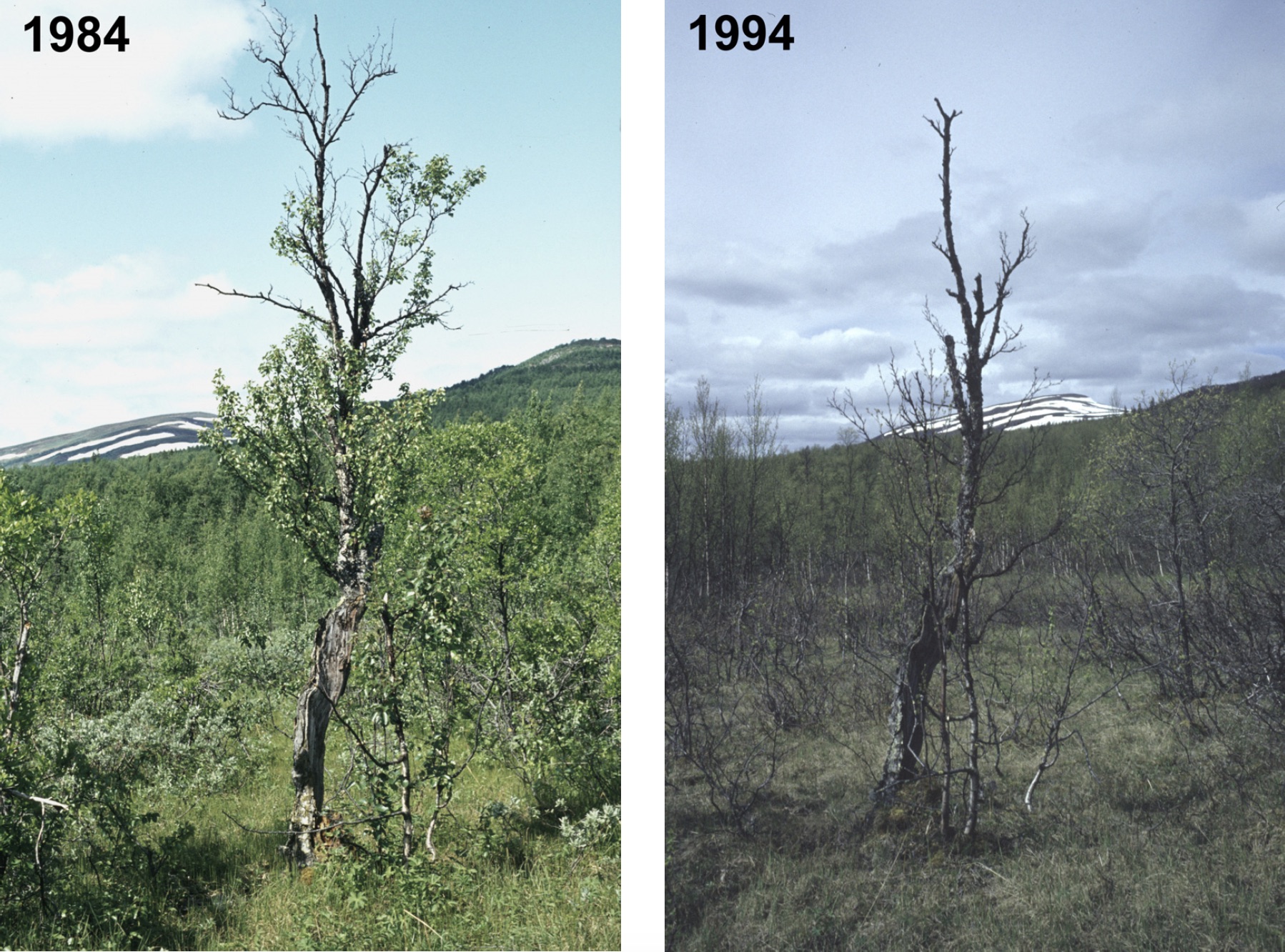Småfågelsamhällets sammansättning och beståndsväxlingar under 37 år i ett område fjällbjörkskog i Lappland, med särskild hänsyn till inverkan av temperaturen och förekomsten av fjällbjörkmätarlarver
DOI:
https://doi.org/10.34080/os.v14.20236Nyckelord:
populationsdynamik, artrikedom, födotillgång, samhällssammansättningAbstract
The breeding passerine bird community of 9 km2 of a primeval subalpine birch forest in Swedish Lapland was censused yearly from 1963 through 1999. The community density remained stable, fluctuating around a mean value of 403 ± 85 territories/km2. Species richness increased by an average of one species every four years. Twenty species made up 98% of the community and Phylloscopus trochilus (40%) and Fringilla montifringilla (19%) remained the dominant species. The species turnover rate between successive seasons was on average 30%. The mean temperatures in June and July were positively correlated to the community density two years and one year later, respectively, less so for the densities of the individual species. Fringilla montifringilla increased in density during the first two years of each Epirrita autumnata caterpillar outbreak, whereas the other species responded only weakly or not at all. All species tended to fluctuate in parallel (no significant opposite trends) which together with the other results suggests that the investigated bird community is far from saturated.
Nedladdningar

Downloads
Publicerad
Referera så här
Nummer
Sektion
Licens
Författaren/författarna innehar copyright för varje enskilt bidrag, men samtliga bidrag är publicerade under en Creative Commons-licens, så att vem som helst kan dela och återanvända bidraget förutsatt att copyright-innehavaren erkänns.







